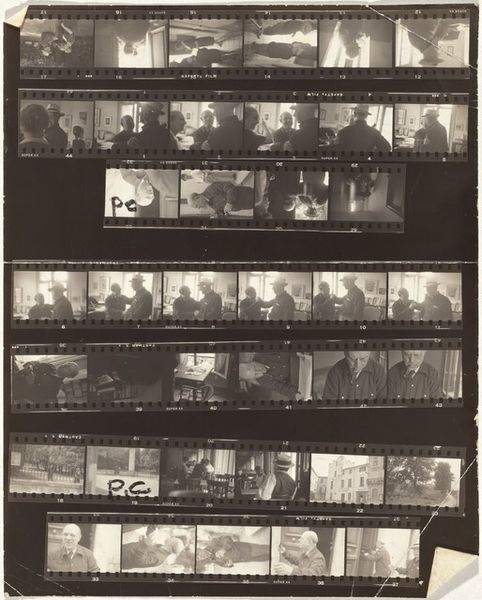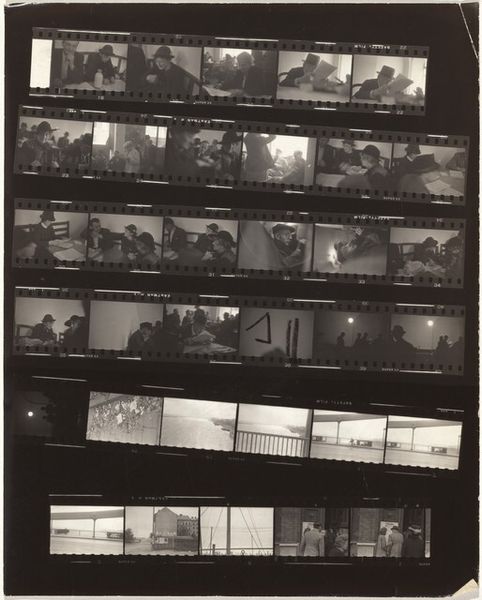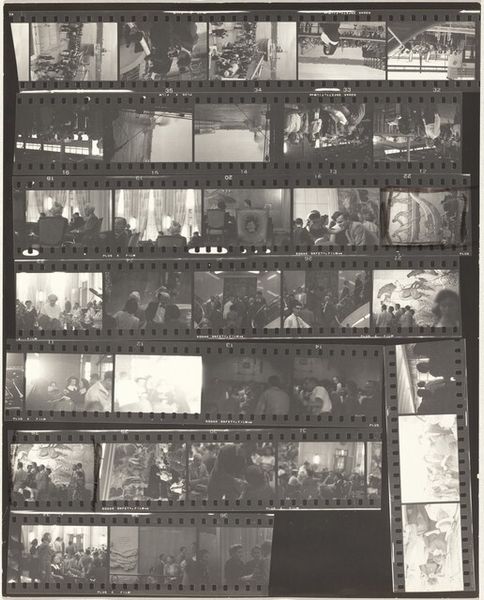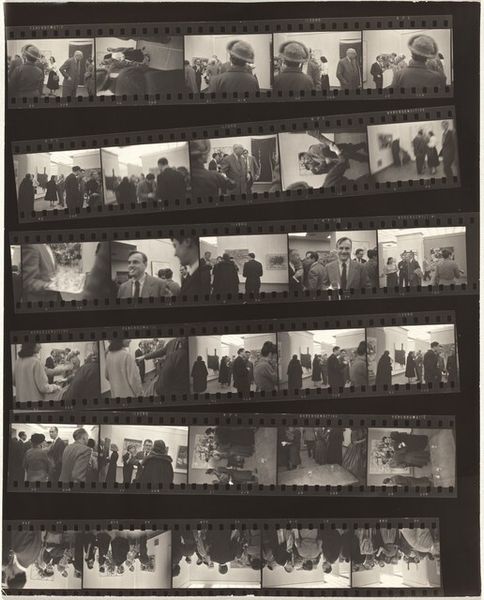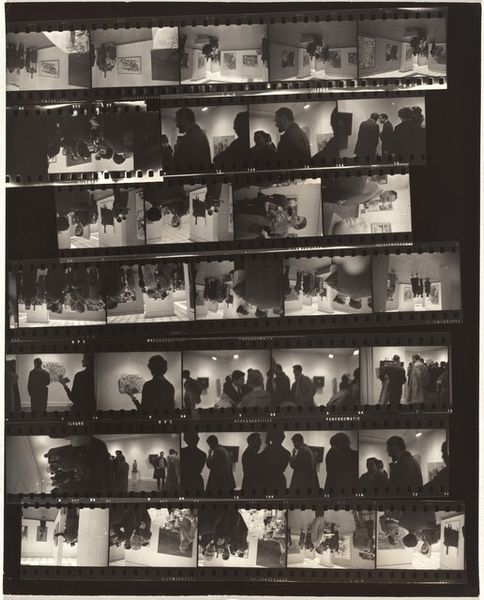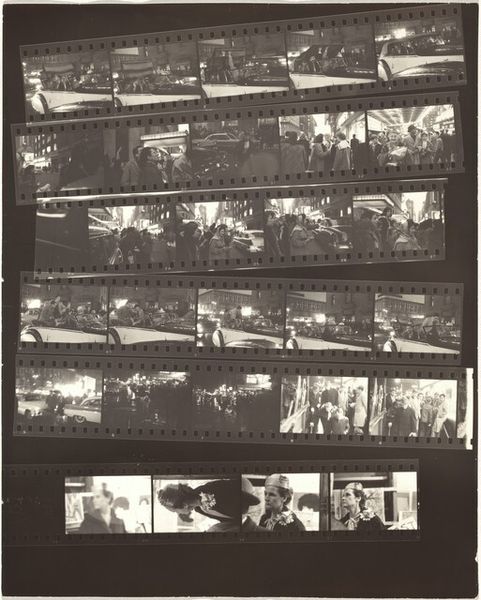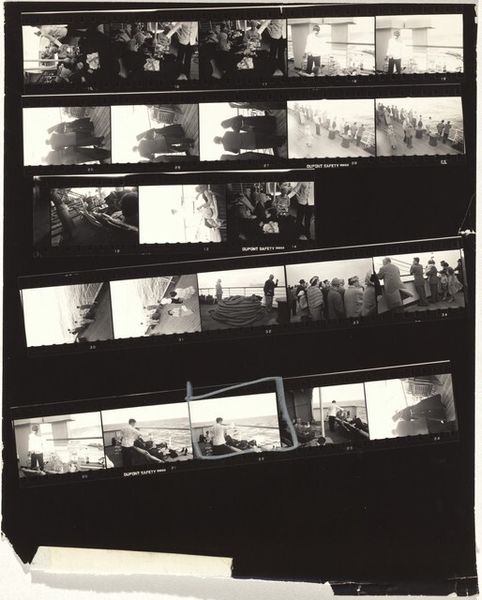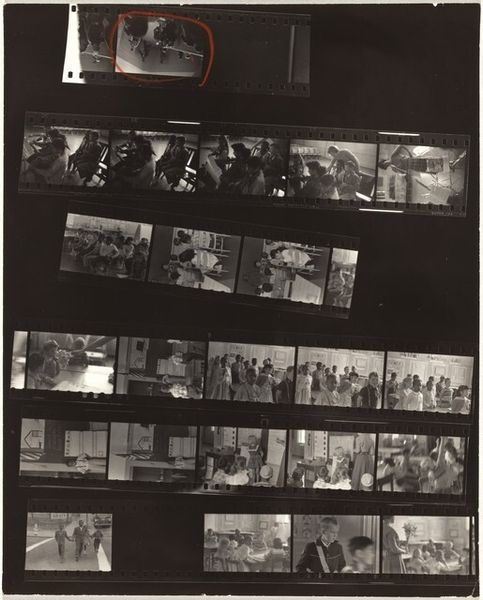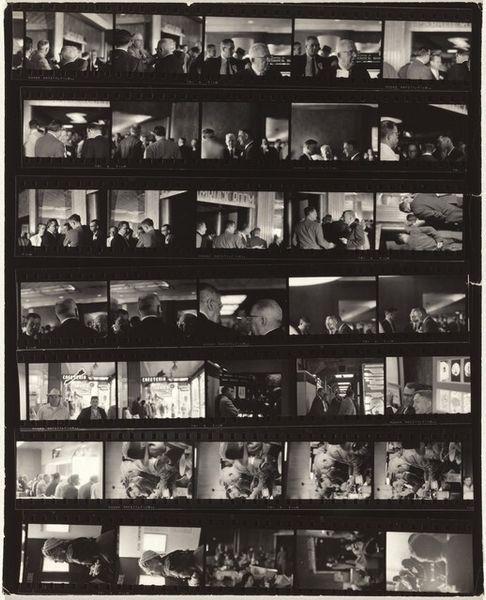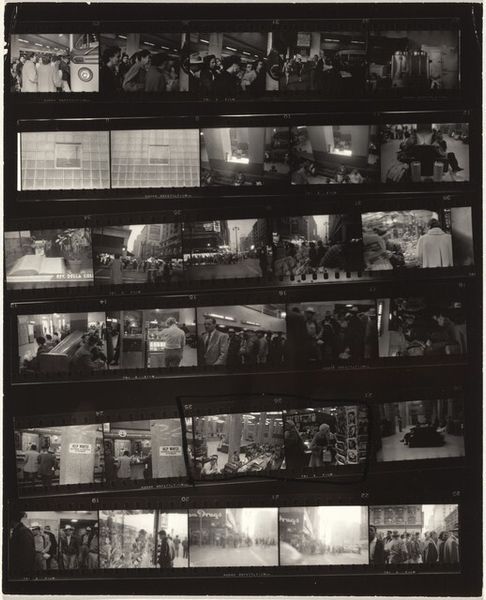
photography, gelatin-silver-print
#
film photography
#
street-photography
#
photography
#
gelatin-silver-print
#
monochrome photography
#
pop-art
#
monochrome
Dimensions: sheet: 25.2 x 20.2 cm (9 15/16 x 7 15/16 in.)
Copyright: National Gallery of Art: CC0 1.0
Editor: Here we have Robert Frank’s "Party--Willem de Kooning no number" from 1961, a gelatin silver print. What immediately strikes me is its raw, almost documentary style. What's your take? Curator: I'm drawn to the materiality itself. Frank gives us the raw filmstrip, the very artifact of photographic production. Notice how he presents these frames. What's included, and perhaps more importantly, what is excluded by his choices of what is framed and how it is presented? Editor: Well, we see several glimpses of a gathering, people dining and conversing, all in monochrome. It feels immediate, like we’re peeking behind the scenes. Is the pop art style because of the serial images and repetition of subjects and the social aspect? Curator: In part. But I'd also consider the act of capturing fleeting social moments through the technology of the camera. Photography democratized portraiture and recording. Frank lays bare the means by which images, and thus our perceptions of events and people, are constructed and circulated, almost an early version of media. What do you notice about how it is presented? Editor: That is interesting... presented as one image? I guess this reminds me about art that has been printed using the silkscreen method, the layering effect. It feels accessible, breaking down the aura of traditional portraiture. Curator: Precisely! The film strip laid bare, not a singular “decisive moment,” emphasizes the work, the process, over the final polished image. We are invited to consider artmaking itself, not just the content presented, which gives way to how images get constructed through mass media in our everyday. Editor: That’s really insightful! It makes me think about how the means of production shape our understanding of the event itself. Thank you for helping me contextualize Frank's photograph beyond just its surface imagery. Curator: It's crucial to examine art's tangible existence and its relationship to the broader social and economic systems that give it meaning. It's rewarding to uncover the process of making that changes our way of seeing.
Comments
No comments
Be the first to comment and join the conversation on the ultimate creative platform.
